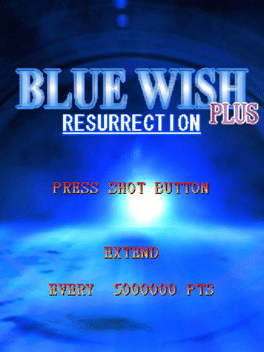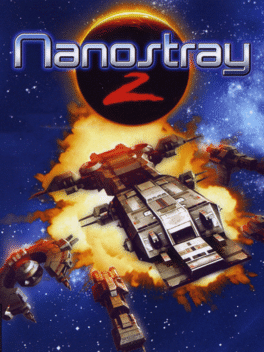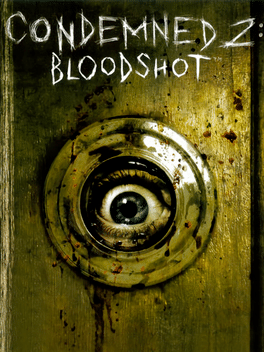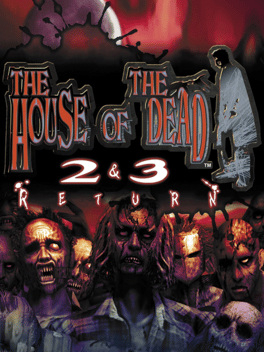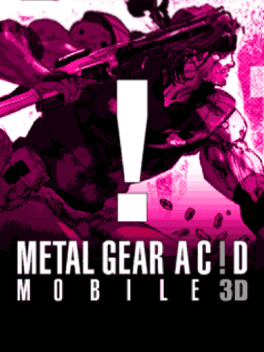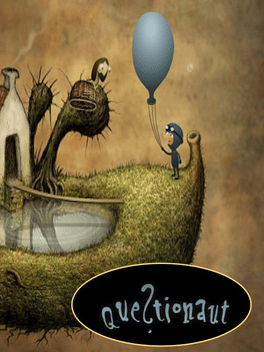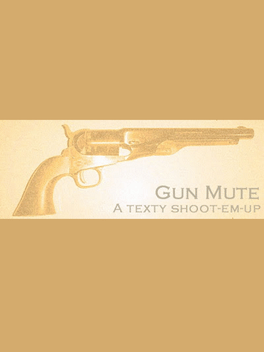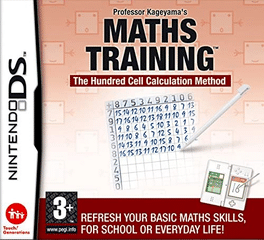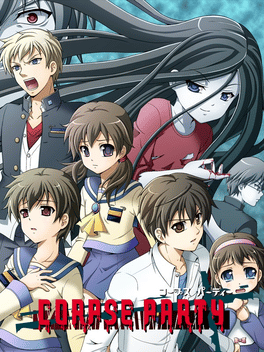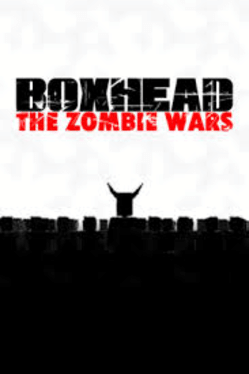New Games - Page 9997
-
Star Wars: Chibi Rebellion
2008
Chibi Rebellion is a SD (Super Deformed) take on the Star Wars universe. Players will go through a hub of randomly selected maps, blasting enemies, solving simple puzzles, and otherwise having fun. Chibi Rebellion falls somewhere between Lego Star Wars and Yoda Stories, so if you didn't like either one of those, you probably won't enjoy this. There is no gore in Chibi Rebellion, enemies typically leave behind a bouncing helmet to signify their passing. -
Blue Wish Resurrection Plus
2008
Blue Wish Resurrection is a doujin freeware Vertical Scrolling Shooter developed by x.x. Game Room and released in 2006. It is the sequel to a much lesser-known game, Blue Wish. A second version of the game, Blue Wish Resurrection Plus, was released in 2008 and features all ships available to play as well as the Eden's Edge, a new soundtrack, and Palette Swaps of the five stages. It also has a number of adjustments that make it easier for new players, such as more extends and deliberate slowdown when there are excessive bullets on screen. As such, some players have taken to calling it a good beginner's shmup. -
Penguins' Journey
2008
-
Big Buck Safari
2008
-
Nanostray 2
2008
Nanostray 2
2008
star 7.4Nanostray 2 is a sequel to the DS shoot-em-up Nanostray released in 2005. It features improvements over it's prequel such as a new weapon system, enhanced touch controls, and unlockable minigames. It is developed by Shin'en Multimedia and published by Majesco. -
Mass Effect: Bring Down the Sky
2008
star 6.5Bring Down the Sky is the first DLC for Mass Effect. The DLC takes place in the Asgard system, where an asteroid has been hijacked and sent on a collision course with the human colony of Terra Nova. -
Condemned 2: Bloodshot
2008
star 8In Condemned 2: Bloodshot, players will engage in visceral combat using a variety of firearms, blunt instruments and an all-new fighting system complete with defensive and offensive combo chains, as well as grapples and holds. To help track the killer and solve the mysteries behind Condemned 2: Bloodshot, players will crack open an all-new set of high-tech forensic tools. Using wits and brute strength, murders can be solved a number of different ways to keep players guessing throughout each suspenseful investigation. Delivering the most brutal hand-to-hand combat experience the first-person genre has ever seen, Condemned 2 follows Ethan Thomas through a string of gruesome murders. Use all-new fighting mechanics and high-tech tools to unravel the mysteries within. -
The House of the Dead 2 & 3 Return
2008
star 7.5This compilation bundles the following games: The House of the Dead 2 (Dreamcast) The House of the Dead III (Xbox) Both games were ported to the Wii with support for the Wii Zapper peripheral. A new Extreme mode is unlockable for The House of the Dead III, with faster enemy attacks and smaller bullet blast radii for the player's guns (similar to the handgun in the second game). At the same time, the shotgun can be reloaded much faster and a new melee attack is introduced: Guard Attack. It is a powerful move that also blocks incoming attacks, but requires a "reload" time. -
George of the Jungle and the Search for the Secret
2008
star 4Players take the role of George from the popular cartoon show, George of the Jungle, in a 3D side scrolling action-adventure. Players swing, climb, and platform their way through the jungle in search of the missing documents which could hold the key to the "secret" medical mystery. The camera views and turns show the 3D view, but essentially the game is played as a 2D platformer with a linear path on a single plane. Often George needs to manipulate objects in the environment, for instance moving boxes to create a platform, to continue. -
Problem Sleuth
2008
Problem Sleuth
2008
Problem Sleuth is a webcomic that started in 2008. is a parody of point-and-click adventure games, jrpg and noir films. -
Metal Gear Acid: Mobile 3D
2008
3D port of PSP's Metal Gear Acid, with some missions and characters removed. The Metal Gear Series sneaks its way to mobile! A plane has been hijacked by an unknown terrorist threat and it?s up to Solid Snake to infiltrate the enemy and put an end to this dangerous crisis. Get ready to experience deep tactical espionage as you plan out your strategy to infiltrate the enemy and accomplish missions in an entirely new Metal Gear game. With atmospheric graphics and appearances by old familiar Metal Gear faces, Metal Gear Acid combines the renowned characteristics of your favourite stealth trip with a new emphasis on tactical turn-based strategy. This innovative approach lets you delve into the strategic side of warfare as differently themed card decks give you unique abilities and actions helping you to defeat the dangers lying ahead. Are you ready to accept your mission? -
Metal Gear Acid 2: Mobile 3D
2008
3D mobile game port of PSP's Metal Gear Acid 2. Metal Gear Acid returns to your mobiles in full 3D! In the enlarged continuation of this tactics game you are going to rescue legendary Solid Snake soldier from the USA army attacks. Moreover, this time Snake is not going to fight alone, secret bosses gave him a girl assistant, Venus. -
Metal Gear Acid 2 Mobile
2008
2D mobile game port of PSP's Metal Gear Acid 2. The award-winning Metal Gear Acid returns to your mobile phone! In the greatly extended sequel of this tactical turn-based Metal Gear game, you assume the roles of Snake and the mysterious female agent Venus. Having been led into a trap by the US military, Snake sees himself caught between the sides. While fighting against vicious enemies, Snake also has to face his inner fears. And what role does Venus play in this scheme? Just like in its popular predecessor, the gameplay of Metal Gear Acid 2 is based on the turn-based card system once more. Play through more than 10 challenging levels in the Story Mode or replay already accomplished missions with redefined objectives in the Stealth and Eliminate Modes. Join the Arena for tactical combat duels against legendary Metal Gear bosses. Supported by the highly improved graphics engine and a set of tunes from the original Metal Gear Acid soundtrack, Metal Gear Acid 2 delivers a gaming experience which makes it easy for yo -
Questionaut
2008
-
Metal Gear Acid Mobile
2008
2D port of PSP's Metal Gear Acid, with some missions and characters removed. -
Gun Mute
2008
-
Shift 2
2008
Shift 2
2008
Get your Shift fix with the next action packed flipping frenzy that is the world of shift. This time not even gravity is what it seems! -
Professor Kageyama's Maths Training
2008
star 5.5Méthode Mathématique Du Professeur Kageyama sur DS vous fait réviser vos bases mathématiques afin que vous puissiez briller en société lors de la résolution d'une équation à inconnues multiples. Le titre s'appuie sur une méthode japonaise visant à apprendre l'arithmétique en faisant faire des opérations via un tableau rempli de chiffres qu'il faut compléter, à travers 20 niveaux de difficulté et 40 exercices proposés. -
Corpse Party
2008
Corpse Party
2008
star 7.9Corpse Party (Corpse Party BloodCovered in Japan) is a part of the Corpse Party survival horror adventure game series created by Team GrisGris for the PC. It is the remake of the original Corpse Party released in 1996 for the NEC PC-9801 with a reworked plot and new characters. -
Boxhead: The Zombie Wars
2008
Your task consists on shooting the dangerous zombies any way you can. You can choose between different levels and game modes.


